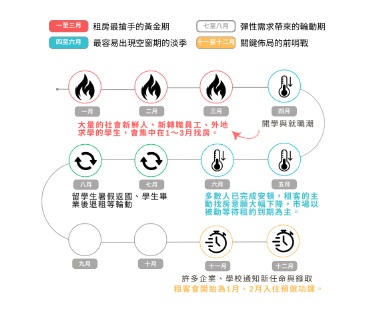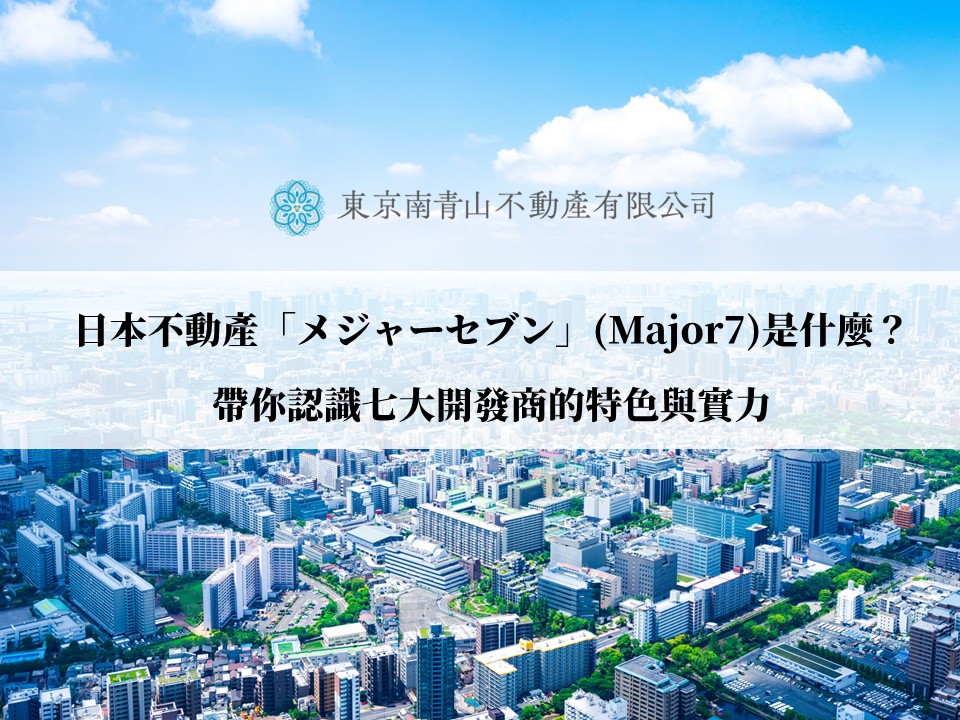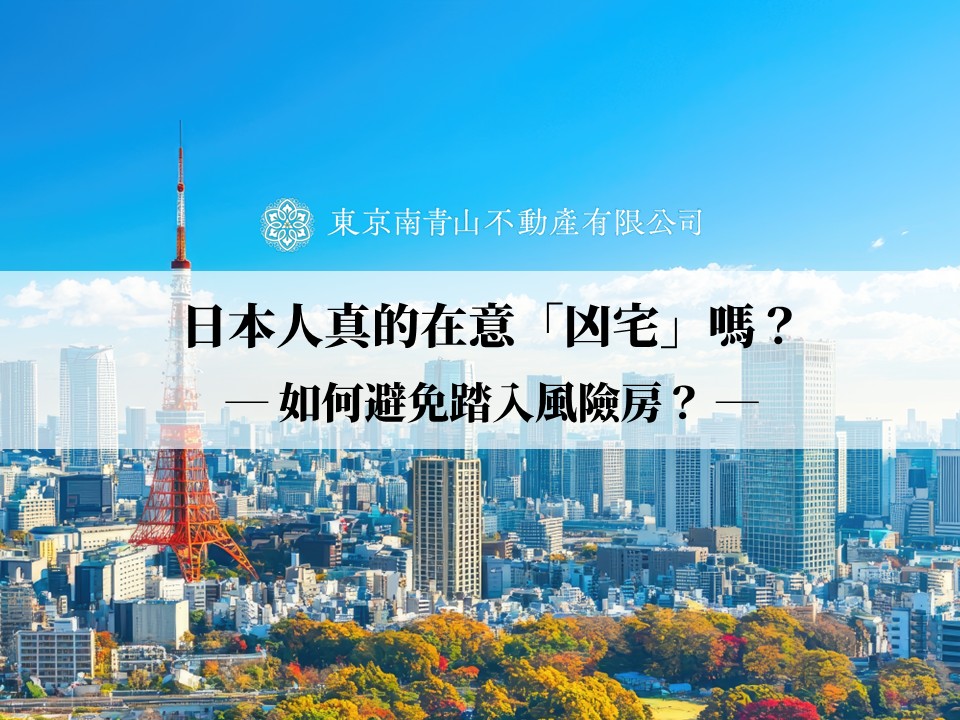Did you know that timing matters when renting a home in Japan? The rental market follows a unique seasonal rhythm each year, and missing the right window could mean losing out on a good property—or seeing your investment returns shrink.
For most people, renting in Japan is simply a lifestyle choice. But for property investors, every month a unit remains vacant directly impacts the return on investment. In fact, just one month of vacancy can reduce your annual yield by over 10%. That’s why timing your rental strategy is more critical than you might think.
This article will walk you through Japan’s rental market trends across all four seasons. Whether you’re a tenant or a landlord, understanding the timing will help you make smarter decisions—renting at the right moment and investing with confidence.

Tokyo Residential Market Statistics: Tokyo Metropolitan Government Information Center
A Visual Guide to Japan’s Rental Market Rhythm Throughout the Year | Quick Reference for Peak and Off-Peak Seasons
January–March: The Peak Season for Rentals
This is the most active period in Japan’s rental market. Since most companies and schools in Japan begin their fiscal and academic years in April, a large number of new graduates, job changers, and students relocating from other regions start searching for housing between January and March.
Many tenants begin scheduling viewings one to two months in advance and are often willing to accept higher rents or pay several months upfront to secure properties with good access to transportation and daily conveniences.
For landlords, this is the best time to maximize returns. Properties in popular areas or near train stations are often rented out immediately with little room for negotiation.
April–June: The Off-Season with Higher Vacancy Risk
After the April rush of new hires and students settles, most people have already moved and are no longer actively searching for housing. As a result, rental activity slows significantly, and the market becomes more passive, relying on lease expirations.
Properties tend to sit vacant longer, often taking two weeks to two months or more to attract interest. Landlords may need to lower rents to attract tenants, reducing rental income efficiency.
July–August: A Period of Transitional Demand
During this time, some university transfer students and international students move in or out, along with short-term workers or tenants returning home for summer break or after graduation.
While not as intense as the January–March peak, there is still noticeable movement and flexible demand, especially among foreign students and short-term residents. Offering furnished units or short-term lease options can help attract these renters and improve seasonal occupancy and returns.
November–December: The Pre-Season Setup Phase
Although year-end is not a peak time for active house hunting, it is when many companies and schools begin notifying individuals of new appointments or transfers. Some tenants start researching housing options for January or February move-ins.
Listing properties early during this period helps secure better search rankings and allows agents to schedule viewings and pre-arrange contracts in advance.

1.5 Months of Vacancy Could Mean Over 10% Loss in Returns?
In practice, we often observe that missing the prime rental window from January to March—even for properties with excellent location and features—can lead to a situation where inquiries drop and competition increases. When listings are released after mid-April, it's common to see properties remain vacant for one to two months before successfully renting out.
According to official estimates, in Tokyo’s Minato Ward, a 2LDK apartment with a floor area of approximately 40–80 square meters typically rents for between ¥250,000 and ¥600,000 per month, depending on location, building age, and condition.
As for market transaction prices, such properties generally sell for around ¥80 million to ¥150 million. In prime areas like Roppongi and Minami-Aoyama, prices can reach ¥120 million to ¥300 million. In neighborhoods such as Shibaura and Hamamatsuchō, prices tend to range between ¥80 million and ¥100 million.
Real Estate Transaction Prices:
Case Simulation: A Mid-Range Property in Minami-Aoyama
This simulation uses a mid-range property in Minami-Aoyama as the basis for estimation. Assume a total investment cost of ¥120,000,000 and a monthly rental income of ¥310,000.
If the property is fully rented throughout the year, the total rental income would be approximately ¥3,720,000. However, if the listing misses the optimal release window and results in 1.5 months of vacancy, the rental income loss would be ¥465,000. This reduces the annual rental income to ¥3,255,000, with a cash flow decline of approximately 12.6%.
Excluding Other Costs:
• Property Price: ¥120,000,000
• Monthly Rent: ¥310,000
Full Occupancy:
• Annual Rent: ¥310,000 × 12 = ¥3,720,000
• Annual Yield: (¥3,720,000 ÷ ¥120,000,000) × 100 = 3.10%
1.5 Months Vacancy:
• Rental Loss: ¥310,000 × 1.5 = ¥465,000
• Annual Rent: ¥3,720,000 - ¥465,000 = ¥3,255,000
• Annual Yield: (¥3,255,000 ÷ ¥120,000,000) × 100 = 2.71%
• Yield Loss Rate: (3.10 - 2.71) ÷ 3.10 × 100 ≈ 12.58%
This calculation does not include other costs such as:
• Initial expenses (agent fees, acquisition tax, registration fees, stamp duty)
• Property management fees
• Repair reserve fund and maintenance fees
• Fixed taxes (property and land tax)
• Income tax
• Renovation costs after tenant move-out
• Ongoing payments during vacancy
While short-term vacancy may not result in a direct financial loss, poor timing in releasing the property can affect long-term capital efficiency and investment flexibility. For investors seeking stable cash flow, this is a critical risk that should be addressed proactively.

※ The above calculation only estimates rental income and does not account for fixed costs such as property management fees, repair reserve contributions, taxes, income tax, or ongoing payments during vacancy. In reality, the actual return is often lower than the simulated value.
Investment Strategy: Leverage Rental Cycle Differences to Stabilize Returns
Strategy 1: Buy During the Off-Season, List During the Peak Season
The off-season (April–June) offers greater room for negotiation. Entering the market during this period allows time for renovations and marketing, so the property can be listed during the January–March peak, improving rental efficiency and bargaining power.
Strategy 2: Design Transitional Lease Terms
When closing deals during the off-season, consider negotiating short-term leases that end in March of the following year. This ensures the property can be re-listed during the next peak season, effectively avoiding long-term vacancy risks.
Strategy 3: Start Marketing 90 Days in Advance
Begin preparations in November—photography, listings, and coordination with agents—to ensure the property appears early on search platforms. This helps capture traffic ahead of the peak season and increases the chances of attracting high-quality tenants.
Many Know How to Choose a Good Location—But Those Who Understand Timing Invest Smarter
One of the key advantages of investing in Japanese real estate is its low risk, predictable cash flow, and stable rental demand. While choosing the right location is important, understanding the rental cycle and avoiding vacancy is what truly maximizes asset performance.
Additionally, the type of lease contract plays a role in rental strategy and risk management. For example, if you prefer short-term rentals or want to ensure the property can be re-listed after the lease ends, consider a fixed-term lease. If you're aiming to attract long-term tenants, a standard lease contract may be more suitable.











